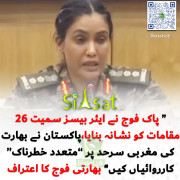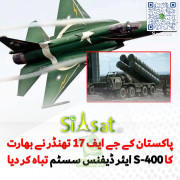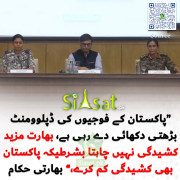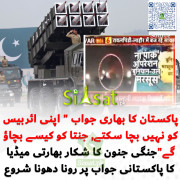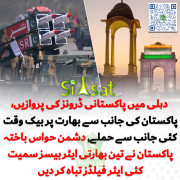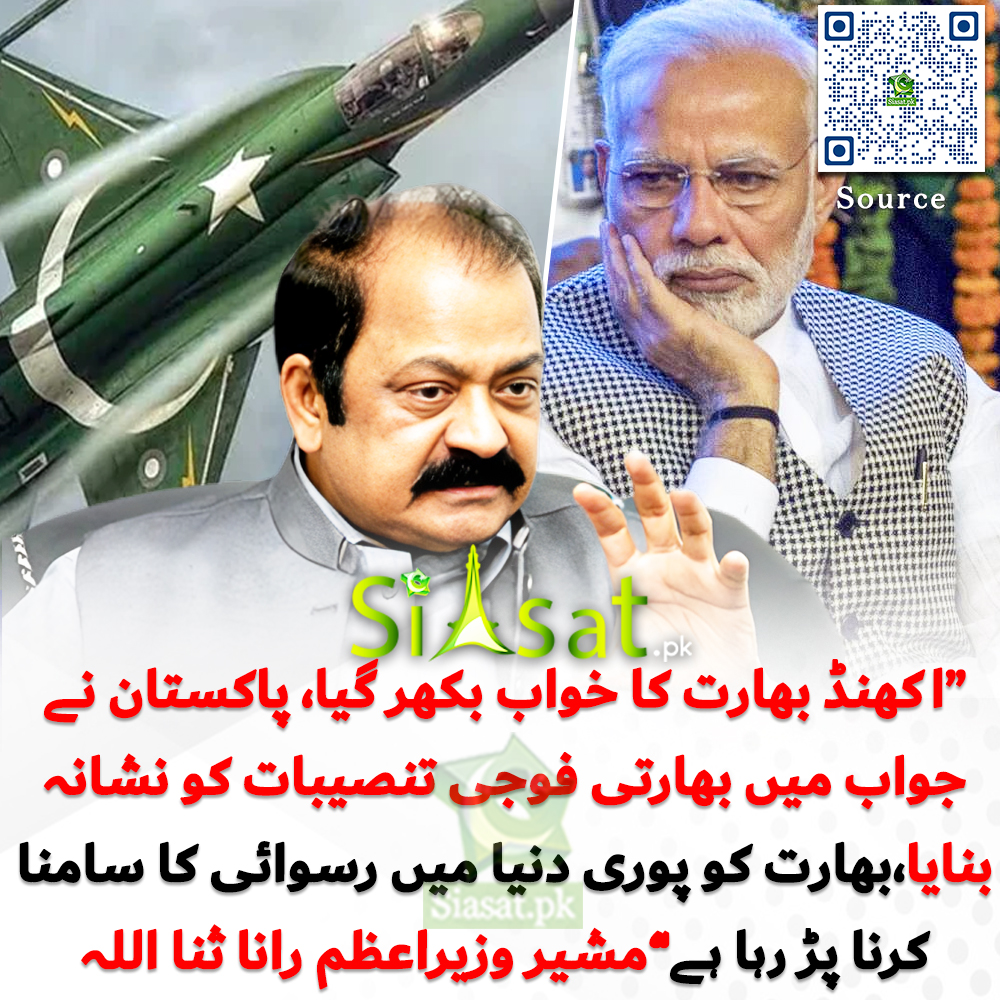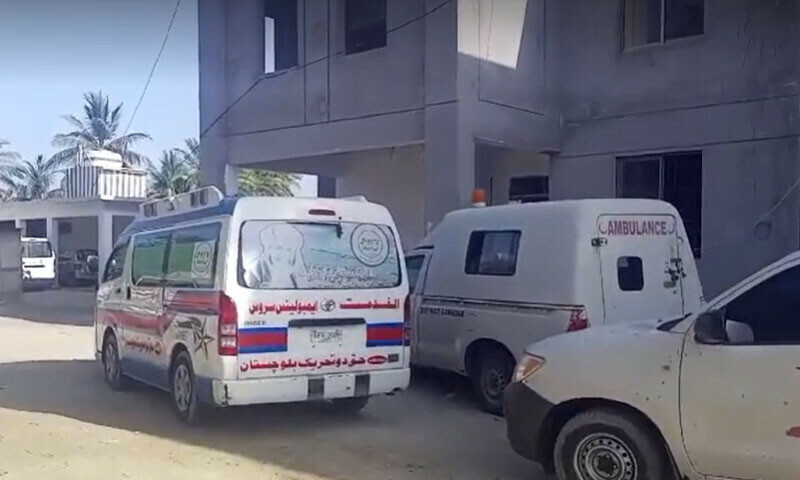hans
Banned
Amnesty International Criticizes Israel; Israel's Military Blasts Report
Israel National News ^ | July 2, 2009 | Avraham Zuroff
Posted on Thursday, July 02, 2009 2:02:15 AM by Avi Kane
Amnesty Internationals annual report condemns Israel for its treatment of Palestinian Authority Arabs while only briefly noting atrocities attributed to the Hamas terrorist organization. Both the IDF and a watchdog on fair media research called the report findings biased and unethical.
Amnesty International issued Thursday its annual report, condemning Israel and PA Arabs for disproportional violence during Operation Cast Lead. The human rights watchdog blames Israel for killing over 1,400 PA Arabs in Gaza and wounding 5,000 others. The report blames the IDF for repeatedly breaching the laws of war by by carrying out direct attacks on civilians and civilian buildings and attacks targeting Palestinian militants that caused a disproportionate toll among civilians. The report also criticizes Israel for demolishing PA homes without permits and for erecting security barriers and army checkpoints.
The IDF called Amnesty Internationals annual report one-sided.
Israel used white phosphorus in Gaza civilian areas
19 January 2009
The Israeli army used white phosphorus, a weapon with a highly incendiary effect, in densely populated civilian residential areas of Gaza City, according to indisputable evidence found an Amnesty International fact-finding team which reached the area last Saturday.
When white phosphorus lands on skin it burns deeply through muscle and into the bone, continuing to burn until deprived of oxygen.
Amnesty Internationals delegates found still-burning white phosphorus wedges all around residential buildings on Sunday. These wedges were further endangering the residents and their property; streets and alleys are full of children playing, drawn to the detritus of war and often unaware of the danger.
The carrier shells which delivered the wedges were also still lying in and around houses and buildings. Some of these heavy steel 155mm shells have caused extensive damage to residential properties.
"Yesterday, we saw streets and alleyways littered with evidence of the use of white phosphorus, including still burning wedges and the remnants of the shells and canisters fired by the Israeli army," said Christopher Cobb-Smith, a weapons expert who is in Gaza as part of the four-person Amnesty International team.
"White phosphorus is a weapon intended to provide a smokescreen for troop movements on the battlefield," said Cobb-Smith. "It is highly incendiary, air burst and its spread effect is such that it that should never be used on civilian areas.
Donatella Rovera, Amnestys researcher on Israel and the Occupied Palestinian Territories said that such extensive use of this weapon in Gaza's densely populated residential neighbourhoods is inherently indiscriminate. "Its repeated use in this manner, despite evidence of its indiscriminate effects and its toll on civilians, is a war crime," she said
When each 155mm artillery shell bursts, it deploys 116 wedges impregnated with white phosphorus which ignite on contact with oxygen and can scatter, depending on the height at which it is burst (and wind conditions), over an area at least the size of a football pitch. In addition to the indiscriminate effect of air-bursting such a weapon, firing such shells as artillery exacerbates the likelihood that civilians will be affected.
"Artillery is an area weapon; not good for pinpoint targeting. The fact that these munitions, which are usually used as ground burst, were fired as air bursts increases the likely size of the danger area, said Chris Cobb-Smith.
Among the places worst affected by the use of white phosphorus was the UNRWA compound in Gaza City, at which Israeli forces fired three white phosphorus shells on 15 January. The white phosphorus landed next to some fuel trucks and caused a large fire which destroyed tons of humanitarian aid.
Prior to this strike, the compound had already been hit an hour earlier and the Israeli authorities had been informed by UNRWA officials and had given assurance that no further strikes would be launched on the compound.
In another incident on the same day a white phosphorus shell landed in the al-Quds hospital in Gaza City also causing a fire that forced hospital staff to evacuate the patients.
Read More
Read Amnesty International blogging from Gaza
Crisis in Gaza
Amnesty International team gains access to Gaza (News, 19 January 2009)
Shelling of UN compound must be investigated (News, 15 January 2009)
Arms embargo vital as Gaza civilian toll mounts (News, 15 January 2009)
Growing calls for investigations and accountability in Gaza conflict (News, 14 January 2009) \
Israel Rejects Own Soldiers Accounts of Gaza Atrocities
FOR THE FIRST time in its history, the Israeli Military College has published very damaging statements and accounts by its own soldiers, describing their killing of innocent and mostly unarmed civilians and their wanton vandalism during Israels 22-day assault on the Gaza Strip. Israel launched its attack two days after Christmas and ended it two days before the inauguration of President Barack Obama.
By the time it declared a unilateral cease-fire, more than 1,400 Palestinians were dead, including more than 440 children, 110 women, and 123 elderly and sick people, according to medical sources in Gaza.
By comparison, 10 Israeli soldiers and three Israeli civilians died, four of the soldiers as a result of friendly fire.
The Israeli soldiers personal statements and eyewitness accounts confirmed similar findings by human rights groups who interviewed civilians and eyewitnesses throughout Gaza.
Many of those interviewed lost family, friends and neighbors, as well as farm animals, saw their homes, possessions and property reduced to rubble, and witnessed many war crimes committed during Operation Cast Lead.
Among the accounts by graduates of the Yitzhak Rabin Pre-military Academy at Oranim Academic College and published in the academys newsletter, one that is particularly horrifying describes an IDF sniper killing a mother and her small children at close range after Israeli soldiers had suddenly ordered them to leave their home and run to safety.
The woman and two of her childrenunarmed, frightened and nervousallegedly were shot because they misunderstood the soldiers instructions about which side of the street to walk down.
In other words, they were shot for going left instead of right.
Another graduate described what he considered the cold-blooded murder of a Palestinian woman.
The testimonies conveyed an atmosphere in which one feels entitled to use unrestricted force against Palestinians, academy director Dany Zamir told Israel public radio.
The climate in general...I dont know how to describe it.... the lives of Palestinians, lets say, are much, much less important than the lives of our soldiers, an infantry squad leader is quoted as saying in the testimonies.
In another cited case, a commander ordered his troops to kill an elderly female civilian walking on a road, even though she was easily identifiable and clearly posed no immediate threat to the soldiers.
The testimonies, by combat pilots and infantry soldiers, also included allegations of the unnecessary destruction of Palestinian property and the ransacking and bulldozing of homes.
We would throw everything out of the windows...refrigerators, plates, furniture. The order was to throw all of the houses contents outside, a soldier said.
Investigation Closed
The Israeli military, however, quickly closed the investigation into the soldiers testimonies, calling the accounts inaccurate and stating: The military police investigation found that the crucial components of their descriptions were based on hearsay and not supported by specific personal knowledge.
In a telephone interview, Michael Sfard, legal counselor for the Israeli human rights group Yesh Din, said, Such a decision by the military court is one more crack that makes our moral structure more shaky and less solidthe more we have such cracks, the less we will be able to stand up for our values.
Meanwhile, the United Nations announced that South African Judge Richard Goldstone will head an international fact-finding mission into allegations of war crimes by Israeli forces and Palestinian militants in Gaza. The former war crimes prosecutor will head a four-member team whose mandate stems from a resolution adopted by the United Nations Human Rights Council.
Moshe Hanegbi, legal commentator for Israel public radio, argued that the investigation should not be conducted by the military, as it would not be credible at a time when Israel is accused of war crimes, and officers could be tried abroad.
Describing such military inquiries as white-washed investigations, Yesh Dins Sfard said: There is a need to create an independent and external investigation, with a professional body that has no links to the army.
A Yesh Din statement elaborated: If these orders were given as described in the testimonies, then both the issuing of the orders and their implementation are criminal offenses. If Israel does not investigate its own offenses, other countries will have to.
Israeli as well as international human rights groups have criticized the military for failing to properly investigate violations of international laws of war, including the Geneva Conventions, in its assault on Gaza, despite compelling evidence of possible war crimes. This is nothing new, however.
More than 90 percent of the complaints filed by Palestinian or Israeli human right organizations in the West Bank in regard to the conduct of Israeli soldiers in the West Bank against Palestinians end up with nothing, noted Sfard.
The number of complaints is considerably lower than the number of events in which Palestinians are victims of the IDFs brutality, he added. Many Palestinians dont believe in the system, so they dont bother to complain.
Meanwhile, Amnesty International, USA has revealed that the U.S. delivered hundreds of tons of unspecified weapons to Israel on March 22mere weeks after Israel had killed hundreds of civilians in Gaza. The new weapons shipment raises the question of whether President Obama would act to prevent further Israeli attacks that may amount to war crimes.
This shipment may also be in violaton of regulations governing the sale of U.S. weapons to foreign nations, which are required to use them for defensive purposes only.
Amnesty Internationals London-based International Secretariat has called on all governments to immediately suspend all arms shipments to Israel and Palestine in order to end the violence for which civilians have been bearing the brunt of the suffering for more than a century.
One Shot, Two Kills
The Israeli daily Haaretz disclosed that many Israeli soldiers wear T-shirts emblazoned with various images of dead [Palestinian] babies, mothers weeping on their childrens graves, a gun aimed at a child and bombed-out mosques. Photographs of these T-shirts were widely posted on the Internet, creating much outrage and negative public comment. One sharpshooters T-shirt showed a very disturbing image of the crosshairs of a sniper rifle lens focused on a pregnant Arab womans stomach. The accompanying caption read, 1 shot, 2 kills.
Another shirt worn by infantry snipers featured the caption Better use Durex next to a picture of a dead Palestinian baby with his weeping mother beside him.
The Haaretz report quotes one Israeli soldier as explaining: These are shirts for around the house, for jogging, in the army. Not for going out.
According to Sfard, however, its not important where the soldiers wear such T-shirts: This is a keyhole to the mentality of how the soldiers are trained to think.
And act?
A Shameful War
Did Israel or its enemy, Hamas commit war crimes during 22 days and nights of aerial assault, rocket launches and ground fighting in Gaza? In one sense the question is academic, because Israel will not recognise the conflict as an international one, and has not signed the 1977 Geneva protocol designed to apply to the victims of internal conflicts. But international lawyers say general principles can be drawn from the laws of war, which may have been violated in several ways.
The main issues are these:
Proportionality
In the wreckage that is Gaza, civilians wonder where they will shelter and when they will eat.Up to 10 times as many Palestinians were killed as Israelis. The Palestinian Ministry of Health says 1,314 Palestinians were killed, of whom 412 were children or teenagers under 18, and 110 were women. On the Israeli side, there were 13 deaths between 27 December and 17 January, of whom three were civilians killed by rockets fired from Gaza. Of the 10 soldiers killed, four were lost to friendly fire.
Even if the Palestinian figure is disputed, it is clear that the death toll was massively higher for Palestinians than Israelis. Proportionality is not simply a matter of numbers, however. There will also be a debate over whether the destruction wrought by Israels huge land, sea and air arsenal was proportionate to the threat posed by Hamas militants to civilians itself also a violation of international humanitarian law.
With foreign journalists barred from Gaza by Israel throughout the war, it is especially hard to come by hard information on the exact circumstances in which all civilian casualties were caused. But unofficial comment from senior military officers in the Israeli media have suggested that a deliberate choice was made to put the protection of its soldiers first, and that of civilians second. If true, it appears to have been successful, but even if it wasnt, the collateral damage inflicted on civilians appears to have significantly exceeded the norms even of previous Israeli operations in Gaza, suggesting looser rules of engagement for military operations.
The head of Human Rights Watch, Kenneth Roth, pointed out that there was an expansive definition of military targets, to include civilian government offices, police stations and the parliament building, on the grounds they at least indirectly helped Hamas.
Firing Into Urban Areas
Israeli forces did not penetrate into the heart of Gaza City or Khan Yunis. But many of the areas where they deployed their forces were heavily built up. Probably the most lethal incident was the 6 January mortar attack that hit the UN school being used as a shelter for hundreds who had fled their homes in the northern Gaza town of Jabalya. It killed 30 straight away, and an estimated 13 more died from their critical injuries in subsequent days.
Israels initial claim in this and several other incidents was that it was responding to fire from Hamas. The militants could be at fault for locating military objectives within or near densely populated areas, in the words of the Geneva Conventions. But the conventions also forbid any attack expected to cause death or injury to civilians which would be excessive in relation to the concrete and direct military advantage anticipated a rule Israel is accused of breaking several times.
Though it fortunately caused no deaths and only two injuries, the incident in which shells containing phosphorus hit the UN Relief and Works Agency headquarters where many were also sheltering was almost as high profile. Not only did they set fire to food and medical supply warehouses, they landed as the UN Secretary-General, Ban Ki-moon, was holding meetings with Israeli leaders. UN chiefs vigorously denied Israeli suggestions made in the media, though apparently not to the UN itself, that Hamas gunmen had been sheltering in UN premises. In the first case Chris Gunness, UNRWAs chief spokesman, revealed that diplomats had been told by the Israeli authorities that Hamas was not operating from the school. And in the second, Mr Ban said that Israels Defence Minister, Ehud Barak, had acknowledged a grave mistake.
White Phosphorus
White phosphorus which can cause horrific injuries, and is heavily restricted in international law is now widely accepted to have been used by Israel in this war at several locations. Dating originally from the First World War, white phosphorus and its distinctive plumes of white smoke can legally be used to mark objectives, spread smoke for concealment or set fire to military targets, but not in civilian areas. Israel first denied using it at all, then claimed it was being used only in uninhabited areas, and then last week announced an investigation into its use.
A high school student Mahmoud al-Jamal, 18, was lucky to have been hit by phosphorus shelling during the third week of the war. By the time he reached the care of Gaza Citys Shifa hospital, unconscious and severely burned in his left arm, legs and chest, the head of the burns unit, Dr Nafez abu Shaban knew the only hope of saving him lay with surgery. Shifa had no experience of it before 27 December, but by the last week of the war we knew that we had to get the patient to the operating room and excise all the burnt tissue.
Mahmoud was running from the heavy fighting between Hamas gunmen and Israeli forces in the southern Gaza city district of Tel Al Hawa when a shell dropped in front of him. I could feel my whole body burning, he said. I fell and asked someone next to me to help. But he was dead. Then I fainted. Part of his body was still smouldering when he was being anaesthetised in theatre. A piece extracted itself from his body and burned the anaesthetist on his chest, said Dr Shaban. Mahmoud will live; unconfirmed estimates are that dozens of others burned by phosphorus have not survived.
Dime Bombs and Other Unusual Weapons
While the vast majority of Palestinians were killed by conventional weapons, a Norwegian doctor, Erik Fosse, said injuries he had seen in Gaza were consistent with the use of Dime (dense inert metal explosive) bombs. It was as if [patients] had stepped on a mine, but there was no shrapnel in the wounds, he said. A UN convention, which Israel has signed, prohibits the use of any weapon the primary effect of which is to injure by fragments which in the human body escape detection by X-rays. This could apply to Dime bombs, but by their nature it is extremely difficult to prove they have been used.
Amnesty International last week called on Israel to give details of weapons beside phosphorus it had used in Gaza, so that medics could better treat the injuries they inflict. Donatella Rovera of Amnesty, currently on a munitions fact-finding mission to Gaza, said doctors were encountering new and unexplained injuries, including charred and sharply severed limbs after air strikes. The UK human rights agency also quoted Dr Subhi Skeik of Shifa hospitals surgery department as saying: We have many cases of amputations and vascular reconstructions where patients would be expected to recover in the normal way. But to our surprise, many of them died an hour or two after operation. It is dramatic.
Dr Shaban of Shifas burns unit said surgical colleagues had encountered bloodless amputations of limbs after attacks during the war, and that some Egyptian and Jordanian doctors with experience in Lebanon and Iraq had suggested that Dime bombs could be responsible. But both Amnesty and Human Rights Watchs weapons expert Mark Galasco, who is also in Gaza, are highly cautious about speculating on the possibility of Dime, not least because of the difficulty of finding provable traces of it.
Israel has always insisted that its weaponry including controversial flechette darts, which have been used in Gaza before and have been found so far in two northern Gaza locations this time is legal. There is no outright ban on Dime bombs, flechettes or even white phosphorus. It is the time and the manner in which they are used that can be illegal.
Targeting of Civilians
Israel has continued to contrast what it says are its strenuous efforts to avoid civilian casualties with Hamass undoubtedly deliberate targeting of civilians with Qassam rockets. There have, however, been several cases in which Palestinian civilians were hit while taking shelter. In other incidents, people in Gaza said they were fired on while seeking to flee to safety, in some cases waving white flags.
In the most widely publicised case, the UN says 80 members of the Samouni family were sheltering in a warehouse hit by missiles early on 5 January, killing 29. Several survivors said they had been ordered by the army to go there the previous day. Meanwhile, Khaled Abed Rabbo said a single soldier shot three of his young daughters from a tank, killing two, as they obeyed orders to flee their home on the outer edge of Jabalya. He suggested it was a deliberate act, The army is investigating, but reaffirms that the IDF does not target civilians.
Yesterday Mr Rabbos mother Suad, 54, who was shot in the arm and abdomen at the same time, corroborated his account. She said she, her daughter and her seven-year-old granddaughter were all carrying white flags when they were shot. She did not see the soldier who fired, but insisted there were no Palestinian fighters in the vicinity.
Humanitarian Aid
While basic humanitarian supplies, including medicine, continued to flow into Gaza from Israel during the war, the UN and other agencies complained more than once that there were severe problems in distributing food and other aid within Gaza because of continuing security problems. These were compounded when a driver contracted by UNRWA was shot dead near the Erez crossing as he prepared to load food, ready for moving it south during a three-hour humanitarian pause.
There were also several complaints from the Red Cross and Israeli human rights agencies that medics and rescue services were prevented from reaching the wounded and dead. Four weak and terrified children from the Samouni family were finally found by the Red Cross, two days after the attack that killed 29 other family members.
After the ground attack started, one convoy, consisting of an ICRC truck and a Palestinian Ministry of Health truck, both carrying medical supplies for hospitals in southern Gaza, and 13 ambulances carrying intensive care patients to Egyptian hospitals, had to turn back after the ICRC driver was shot and injured near a military checkpoint in the centre of the strip.
Fuel shortages and power cuts continued to deprive about a million Gazans of electricity at any one time. Sewage and water supplies were badly hit, because pumps could not operate.
Israel National News ^ | July 2, 2009 | Avraham Zuroff
Posted on Thursday, July 02, 2009 2:02:15 AM by Avi Kane
Amnesty Internationals annual report condemns Israel for its treatment of Palestinian Authority Arabs while only briefly noting atrocities attributed to the Hamas terrorist organization. Both the IDF and a watchdog on fair media research called the report findings biased and unethical.
Amnesty International issued Thursday its annual report, condemning Israel and PA Arabs for disproportional violence during Operation Cast Lead. The human rights watchdog blames Israel for killing over 1,400 PA Arabs in Gaza and wounding 5,000 others. The report blames the IDF for repeatedly breaching the laws of war by by carrying out direct attacks on civilians and civilian buildings and attacks targeting Palestinian militants that caused a disproportionate toll among civilians. The report also criticizes Israel for demolishing PA homes without permits and for erecting security barriers and army checkpoints.
The IDF called Amnesty Internationals annual report one-sided.
Israel used white phosphorus in Gaza civilian areas
19 January 2009
The Israeli army used white phosphorus, a weapon with a highly incendiary effect, in densely populated civilian residential areas of Gaza City, according to indisputable evidence found an Amnesty International fact-finding team which reached the area last Saturday.
When white phosphorus lands on skin it burns deeply through muscle and into the bone, continuing to burn until deprived of oxygen.
Amnesty Internationals delegates found still-burning white phosphorus wedges all around residential buildings on Sunday. These wedges were further endangering the residents and their property; streets and alleys are full of children playing, drawn to the detritus of war and often unaware of the danger.
The carrier shells which delivered the wedges were also still lying in and around houses and buildings. Some of these heavy steel 155mm shells have caused extensive damage to residential properties.
"Yesterday, we saw streets and alleyways littered with evidence of the use of white phosphorus, including still burning wedges and the remnants of the shells and canisters fired by the Israeli army," said Christopher Cobb-Smith, a weapons expert who is in Gaza as part of the four-person Amnesty International team.
"White phosphorus is a weapon intended to provide a smokescreen for troop movements on the battlefield," said Cobb-Smith. "It is highly incendiary, air burst and its spread effect is such that it that should never be used on civilian areas.
Donatella Rovera, Amnestys researcher on Israel and the Occupied Palestinian Territories said that such extensive use of this weapon in Gaza's densely populated residential neighbourhoods is inherently indiscriminate. "Its repeated use in this manner, despite evidence of its indiscriminate effects and its toll on civilians, is a war crime," she said
When each 155mm artillery shell bursts, it deploys 116 wedges impregnated with white phosphorus which ignite on contact with oxygen and can scatter, depending on the height at which it is burst (and wind conditions), over an area at least the size of a football pitch. In addition to the indiscriminate effect of air-bursting such a weapon, firing such shells as artillery exacerbates the likelihood that civilians will be affected.
"Artillery is an area weapon; not good for pinpoint targeting. The fact that these munitions, which are usually used as ground burst, were fired as air bursts increases the likely size of the danger area, said Chris Cobb-Smith.
Among the places worst affected by the use of white phosphorus was the UNRWA compound in Gaza City, at which Israeli forces fired three white phosphorus shells on 15 January. The white phosphorus landed next to some fuel trucks and caused a large fire which destroyed tons of humanitarian aid.
Prior to this strike, the compound had already been hit an hour earlier and the Israeli authorities had been informed by UNRWA officials and had given assurance that no further strikes would be launched on the compound.
In another incident on the same day a white phosphorus shell landed in the al-Quds hospital in Gaza City also causing a fire that forced hospital staff to evacuate the patients.
Read More
Read Amnesty International blogging from Gaza
Crisis in Gaza
Amnesty International team gains access to Gaza (News, 19 January 2009)
Shelling of UN compound must be investigated (News, 15 January 2009)
Arms embargo vital as Gaza civilian toll mounts (News, 15 January 2009)
Growing calls for investigations and accountability in Gaza conflict (News, 14 January 2009) \
Israel Rejects Own Soldiers Accounts of Gaza Atrocities
FOR THE FIRST time in its history, the Israeli Military College has published very damaging statements and accounts by its own soldiers, describing their killing of innocent and mostly unarmed civilians and their wanton vandalism during Israels 22-day assault on the Gaza Strip. Israel launched its attack two days after Christmas and ended it two days before the inauguration of President Barack Obama.
By the time it declared a unilateral cease-fire, more than 1,400 Palestinians were dead, including more than 440 children, 110 women, and 123 elderly and sick people, according to medical sources in Gaza.
By comparison, 10 Israeli soldiers and three Israeli civilians died, four of the soldiers as a result of friendly fire.
The Israeli soldiers personal statements and eyewitness accounts confirmed similar findings by human rights groups who interviewed civilians and eyewitnesses throughout Gaza.
Many of those interviewed lost family, friends and neighbors, as well as farm animals, saw their homes, possessions and property reduced to rubble, and witnessed many war crimes committed during Operation Cast Lead.
Among the accounts by graduates of the Yitzhak Rabin Pre-military Academy at Oranim Academic College and published in the academys newsletter, one that is particularly horrifying describes an IDF sniper killing a mother and her small children at close range after Israeli soldiers had suddenly ordered them to leave their home and run to safety.
The woman and two of her childrenunarmed, frightened and nervousallegedly were shot because they misunderstood the soldiers instructions about which side of the street to walk down.
In other words, they were shot for going left instead of right.
Another graduate described what he considered the cold-blooded murder of a Palestinian woman.
The testimonies conveyed an atmosphere in which one feels entitled to use unrestricted force against Palestinians, academy director Dany Zamir told Israel public radio.
The climate in general...I dont know how to describe it.... the lives of Palestinians, lets say, are much, much less important than the lives of our soldiers, an infantry squad leader is quoted as saying in the testimonies.
In another cited case, a commander ordered his troops to kill an elderly female civilian walking on a road, even though she was easily identifiable and clearly posed no immediate threat to the soldiers.
The testimonies, by combat pilots and infantry soldiers, also included allegations of the unnecessary destruction of Palestinian property and the ransacking and bulldozing of homes.
We would throw everything out of the windows...refrigerators, plates, furniture. The order was to throw all of the houses contents outside, a soldier said.
Investigation Closed
The Israeli military, however, quickly closed the investigation into the soldiers testimonies, calling the accounts inaccurate and stating: The military police investigation found that the crucial components of their descriptions were based on hearsay and not supported by specific personal knowledge.
In a telephone interview, Michael Sfard, legal counselor for the Israeli human rights group Yesh Din, said, Such a decision by the military court is one more crack that makes our moral structure more shaky and less solidthe more we have such cracks, the less we will be able to stand up for our values.
Meanwhile, the United Nations announced that South African Judge Richard Goldstone will head an international fact-finding mission into allegations of war crimes by Israeli forces and Palestinian militants in Gaza. The former war crimes prosecutor will head a four-member team whose mandate stems from a resolution adopted by the United Nations Human Rights Council.
Moshe Hanegbi, legal commentator for Israel public radio, argued that the investigation should not be conducted by the military, as it would not be credible at a time when Israel is accused of war crimes, and officers could be tried abroad.
Describing such military inquiries as white-washed investigations, Yesh Dins Sfard said: There is a need to create an independent and external investigation, with a professional body that has no links to the army.
A Yesh Din statement elaborated: If these orders were given as described in the testimonies, then both the issuing of the orders and their implementation are criminal offenses. If Israel does not investigate its own offenses, other countries will have to.
Israeli as well as international human rights groups have criticized the military for failing to properly investigate violations of international laws of war, including the Geneva Conventions, in its assault on Gaza, despite compelling evidence of possible war crimes. This is nothing new, however.
More than 90 percent of the complaints filed by Palestinian or Israeli human right organizations in the West Bank in regard to the conduct of Israeli soldiers in the West Bank against Palestinians end up with nothing, noted Sfard.
The number of complaints is considerably lower than the number of events in which Palestinians are victims of the IDFs brutality, he added. Many Palestinians dont believe in the system, so they dont bother to complain.
Meanwhile, Amnesty International, USA has revealed that the U.S. delivered hundreds of tons of unspecified weapons to Israel on March 22mere weeks after Israel had killed hundreds of civilians in Gaza. The new weapons shipment raises the question of whether President Obama would act to prevent further Israeli attacks that may amount to war crimes.
This shipment may also be in violaton of regulations governing the sale of U.S. weapons to foreign nations, which are required to use them for defensive purposes only.
Amnesty Internationals London-based International Secretariat has called on all governments to immediately suspend all arms shipments to Israel and Palestine in order to end the violence for which civilians have been bearing the brunt of the suffering for more than a century.
One Shot, Two Kills
The Israeli daily Haaretz disclosed that many Israeli soldiers wear T-shirts emblazoned with various images of dead [Palestinian] babies, mothers weeping on their childrens graves, a gun aimed at a child and bombed-out mosques. Photographs of these T-shirts were widely posted on the Internet, creating much outrage and negative public comment. One sharpshooters T-shirt showed a very disturbing image of the crosshairs of a sniper rifle lens focused on a pregnant Arab womans stomach. The accompanying caption read, 1 shot, 2 kills.
Another shirt worn by infantry snipers featured the caption Better use Durex next to a picture of a dead Palestinian baby with his weeping mother beside him.
The Haaretz report quotes one Israeli soldier as explaining: These are shirts for around the house, for jogging, in the army. Not for going out.
According to Sfard, however, its not important where the soldiers wear such T-shirts: This is a keyhole to the mentality of how the soldiers are trained to think.
And act?
A Shameful War
Did Israel or its enemy, Hamas commit war crimes during 22 days and nights of aerial assault, rocket launches and ground fighting in Gaza? In one sense the question is academic, because Israel will not recognise the conflict as an international one, and has not signed the 1977 Geneva protocol designed to apply to the victims of internal conflicts. But international lawyers say general principles can be drawn from the laws of war, which may have been violated in several ways.
The main issues are these:
Proportionality
In the wreckage that is Gaza, civilians wonder where they will shelter and when they will eat.Up to 10 times as many Palestinians were killed as Israelis. The Palestinian Ministry of Health says 1,314 Palestinians were killed, of whom 412 were children or teenagers under 18, and 110 were women. On the Israeli side, there were 13 deaths between 27 December and 17 January, of whom three were civilians killed by rockets fired from Gaza. Of the 10 soldiers killed, four were lost to friendly fire.
Even if the Palestinian figure is disputed, it is clear that the death toll was massively higher for Palestinians than Israelis. Proportionality is not simply a matter of numbers, however. There will also be a debate over whether the destruction wrought by Israels huge land, sea and air arsenal was proportionate to the threat posed by Hamas militants to civilians itself also a violation of international humanitarian law.
With foreign journalists barred from Gaza by Israel throughout the war, it is especially hard to come by hard information on the exact circumstances in which all civilian casualties were caused. But unofficial comment from senior military officers in the Israeli media have suggested that a deliberate choice was made to put the protection of its soldiers first, and that of civilians second. If true, it appears to have been successful, but even if it wasnt, the collateral damage inflicted on civilians appears to have significantly exceeded the norms even of previous Israeli operations in Gaza, suggesting looser rules of engagement for military operations.
The head of Human Rights Watch, Kenneth Roth, pointed out that there was an expansive definition of military targets, to include civilian government offices, police stations and the parliament building, on the grounds they at least indirectly helped Hamas.
Firing Into Urban Areas
Israeli forces did not penetrate into the heart of Gaza City or Khan Yunis. But many of the areas where they deployed their forces were heavily built up. Probably the most lethal incident was the 6 January mortar attack that hit the UN school being used as a shelter for hundreds who had fled their homes in the northern Gaza town of Jabalya. It killed 30 straight away, and an estimated 13 more died from their critical injuries in subsequent days.
Israels initial claim in this and several other incidents was that it was responding to fire from Hamas. The militants could be at fault for locating military objectives within or near densely populated areas, in the words of the Geneva Conventions. But the conventions also forbid any attack expected to cause death or injury to civilians which would be excessive in relation to the concrete and direct military advantage anticipated a rule Israel is accused of breaking several times.
Though it fortunately caused no deaths and only two injuries, the incident in which shells containing phosphorus hit the UN Relief and Works Agency headquarters where many were also sheltering was almost as high profile. Not only did they set fire to food and medical supply warehouses, they landed as the UN Secretary-General, Ban Ki-moon, was holding meetings with Israeli leaders. UN chiefs vigorously denied Israeli suggestions made in the media, though apparently not to the UN itself, that Hamas gunmen had been sheltering in UN premises. In the first case Chris Gunness, UNRWAs chief spokesman, revealed that diplomats had been told by the Israeli authorities that Hamas was not operating from the school. And in the second, Mr Ban said that Israels Defence Minister, Ehud Barak, had acknowledged a grave mistake.
White Phosphorus
White phosphorus which can cause horrific injuries, and is heavily restricted in international law is now widely accepted to have been used by Israel in this war at several locations. Dating originally from the First World War, white phosphorus and its distinctive plumes of white smoke can legally be used to mark objectives, spread smoke for concealment or set fire to military targets, but not in civilian areas. Israel first denied using it at all, then claimed it was being used only in uninhabited areas, and then last week announced an investigation into its use.
A high school student Mahmoud al-Jamal, 18, was lucky to have been hit by phosphorus shelling during the third week of the war. By the time he reached the care of Gaza Citys Shifa hospital, unconscious and severely burned in his left arm, legs and chest, the head of the burns unit, Dr Nafez abu Shaban knew the only hope of saving him lay with surgery. Shifa had no experience of it before 27 December, but by the last week of the war we knew that we had to get the patient to the operating room and excise all the burnt tissue.
Mahmoud was running from the heavy fighting between Hamas gunmen and Israeli forces in the southern Gaza city district of Tel Al Hawa when a shell dropped in front of him. I could feel my whole body burning, he said. I fell and asked someone next to me to help. But he was dead. Then I fainted. Part of his body was still smouldering when he was being anaesthetised in theatre. A piece extracted itself from his body and burned the anaesthetist on his chest, said Dr Shaban. Mahmoud will live; unconfirmed estimates are that dozens of others burned by phosphorus have not survived.
Dime Bombs and Other Unusual Weapons
While the vast majority of Palestinians were killed by conventional weapons, a Norwegian doctor, Erik Fosse, said injuries he had seen in Gaza were consistent with the use of Dime (dense inert metal explosive) bombs. It was as if [patients] had stepped on a mine, but there was no shrapnel in the wounds, he said. A UN convention, which Israel has signed, prohibits the use of any weapon the primary effect of which is to injure by fragments which in the human body escape detection by X-rays. This could apply to Dime bombs, but by their nature it is extremely difficult to prove they have been used.
Amnesty International last week called on Israel to give details of weapons beside phosphorus it had used in Gaza, so that medics could better treat the injuries they inflict. Donatella Rovera of Amnesty, currently on a munitions fact-finding mission to Gaza, said doctors were encountering new and unexplained injuries, including charred and sharply severed limbs after air strikes. The UK human rights agency also quoted Dr Subhi Skeik of Shifa hospitals surgery department as saying: We have many cases of amputations and vascular reconstructions where patients would be expected to recover in the normal way. But to our surprise, many of them died an hour or two after operation. It is dramatic.
Dr Shaban of Shifas burns unit said surgical colleagues had encountered bloodless amputations of limbs after attacks during the war, and that some Egyptian and Jordanian doctors with experience in Lebanon and Iraq had suggested that Dime bombs could be responsible. But both Amnesty and Human Rights Watchs weapons expert Mark Galasco, who is also in Gaza, are highly cautious about speculating on the possibility of Dime, not least because of the difficulty of finding provable traces of it.
Israel has always insisted that its weaponry including controversial flechette darts, which have been used in Gaza before and have been found so far in two northern Gaza locations this time is legal. There is no outright ban on Dime bombs, flechettes or even white phosphorus. It is the time and the manner in which they are used that can be illegal.
Targeting of Civilians
Israel has continued to contrast what it says are its strenuous efforts to avoid civilian casualties with Hamass undoubtedly deliberate targeting of civilians with Qassam rockets. There have, however, been several cases in which Palestinian civilians were hit while taking shelter. In other incidents, people in Gaza said they were fired on while seeking to flee to safety, in some cases waving white flags.
In the most widely publicised case, the UN says 80 members of the Samouni family were sheltering in a warehouse hit by missiles early on 5 January, killing 29. Several survivors said they had been ordered by the army to go there the previous day. Meanwhile, Khaled Abed Rabbo said a single soldier shot three of his young daughters from a tank, killing two, as they obeyed orders to flee their home on the outer edge of Jabalya. He suggested it was a deliberate act, The army is investigating, but reaffirms that the IDF does not target civilians.
Yesterday Mr Rabbos mother Suad, 54, who was shot in the arm and abdomen at the same time, corroborated his account. She said she, her daughter and her seven-year-old granddaughter were all carrying white flags when they were shot. She did not see the soldier who fired, but insisted there were no Palestinian fighters in the vicinity.
Humanitarian Aid
While basic humanitarian supplies, including medicine, continued to flow into Gaza from Israel during the war, the UN and other agencies complained more than once that there were severe problems in distributing food and other aid within Gaza because of continuing security problems. These were compounded when a driver contracted by UNRWA was shot dead near the Erez crossing as he prepared to load food, ready for moving it south during a three-hour humanitarian pause.
There were also several complaints from the Red Cross and Israeli human rights agencies that medics and rescue services were prevented from reaching the wounded and dead. Four weak and terrified children from the Samouni family were finally found by the Red Cross, two days after the attack that killed 29 other family members.
After the ground attack started, one convoy, consisting of an ICRC truck and a Palestinian Ministry of Health truck, both carrying medical supplies for hospitals in southern Gaza, and 13 ambulances carrying intensive care patients to Egyptian hospitals, had to turn back after the ICRC driver was shot and injured near a military checkpoint in the centre of the strip.
Fuel shortages and power cuts continued to deprive about a million Gazans of electricity at any one time. Sewage and water supplies were badly hit, because pumps could not operate.

